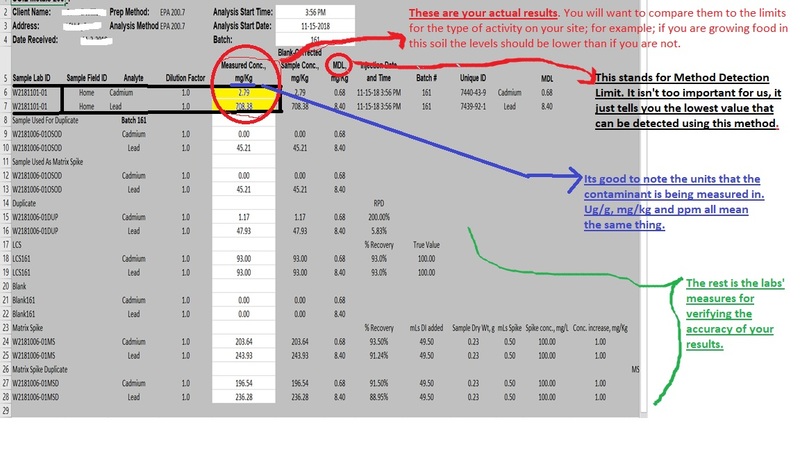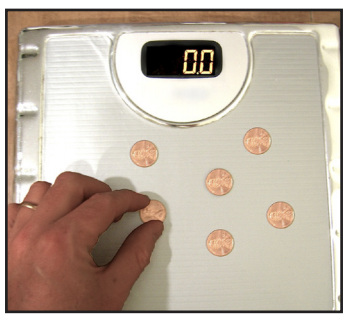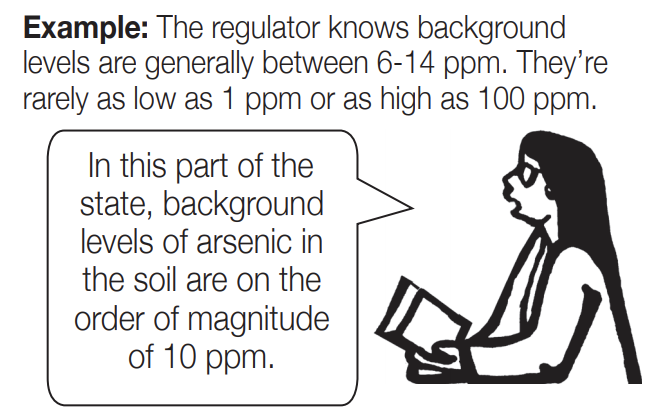sandbox-interpret-soil-tests
If you’ve given soil samples to a lab for contaminant testing and received the results, one of the next steps is to interpret the results and make meaning of them. You might have a short document listing test results from the lab, or a longer report that includes some summarizing and recommended actions.
You can also follow along and get updates on this topic by subscribing to the interpret-soil-tests tag
Guides and activities to try
Here are some resources and activities that can help you understand the kinds of information in soil test results and how to interpret them. Some of these activities explain how community members can work together on reviewing documents.
Activities
These activities involve comparing the measured amounts of chemicals reported in your results to health-based standards or screening levels set by a government agency. The standard level is the amount of chemical over which there might be concerns, and more detailed testing would probably be helpful. “Health-based” means that the standard considers potential impacts on human health.
Some notes on terminology
In a survey of regulatory agencies in several states across the US, here’s how the states usually defined terms (paraphrased from pg. 44 of this document):
- Screening level: “a level that provides information on whether additional evaluation of a specific chemical in a medium is required.”
- Cleanup goal: “most states indicated that this related to the level at which no further remediation would be required.”
- Target level: “either a chemical level in a given medium that is protective of human health, or an acceptable risk level (e.g., a specific cancer risk and/or HQ [hazard quotient]).”
From: ITRC (Interstate Technology & Regulatory Council). 2005. Examination of Risk-Based Screening Values and Approaches of Selected States. RISK-1. Washington, D.C.: Interstate Technology & Regulatory Council, Risk Assessment Resources Team.
For more information about screening levels, this section) explains what screening levels are and how they relate to human health.
Example sources for health-based standards
As mentioned in the posts above, standard levels can vary by city, state, country, and agency. In “How to interpret soil test results,” you’ll find a table comparing standards from different regions and agencies for various contaminants.
Your soil test results or report might already list local standard or screening levels next to your results. If not, here are some different sources for standards:
- New York State Soil Cleanup Objectives (SCOs)
- Brownfield Cleanup Program: Development of Soil Cleanup Objectives - Technical Support Document
- Soil cleanup objective levels for unrestricted land use start on pg. 345. Restricted land uses, including residential, start on pg. 349.
- US Environmental Protection Agency
- Regional Removal Management Levels (RMLs) User's Guide
- You can download tables of RML values here. Look for the concentrations in the “Removal Levels” column on the right for residential soil or industrial soil.
- ETOX: Information System Ecotoxicology and Environmental Quality Targets
- The ETOX database “contains information on various national and international environmental quality guidelines, targets, standards, criteria, and limit values.”
- Search by “Substance” on the left-hand menu to see entries for that chemical. Click on an entry and you’ll see on the right-hand menu “Quality targets,” which lists that chemical’s standard levels for soil and water in different countries. It’s not an exhaustive list, but it’s a source for some international standards.
More background on technical documents and standard levels
Questions
Questions from the Public Lab community tagged with interpret-soil-tests will appear here
| Title | Author | Updated | Likes | Comments |
|---|---|---|---|---|
| Nothing yet on the topic "interpret-soil-tests" -- be the first to post something! |
Additional resources and guides
- Understanding Results, from the Healthy Soils, Healthy Communities project at Cornell University’s College of Agriculture and Life Sciences. Of particular interest might be their guide, “Understanding Your Test Results: Metals in Garden Soils and Vegetables.”
- Quintin, A., and Fraiser, L. 2010. Comparison of International Risk-Based Screening Levels. Proceedings of the Annual International Conference on Soils, Sediments, Water and Energy. Vol. 15 , Article 24.
- See pg. 295 for a table comparing screening levels from different countries for various contaminants, including heavy metals (lead, arsenic) and organic pollutants (benzene, PCBs).
Getting technical support
If you’re looking for additional support in understanding and interpreting soil test results, here are some resources on approaches to try:
Partnering with a Local College for Environmental Testing
Post a question or issue brief on Public Lab
Some examples of how Public Lab community members have worked together on evaluating and interpreting reports:
You can post your own question about interpreting soil tests here, or post an issue brief here.





